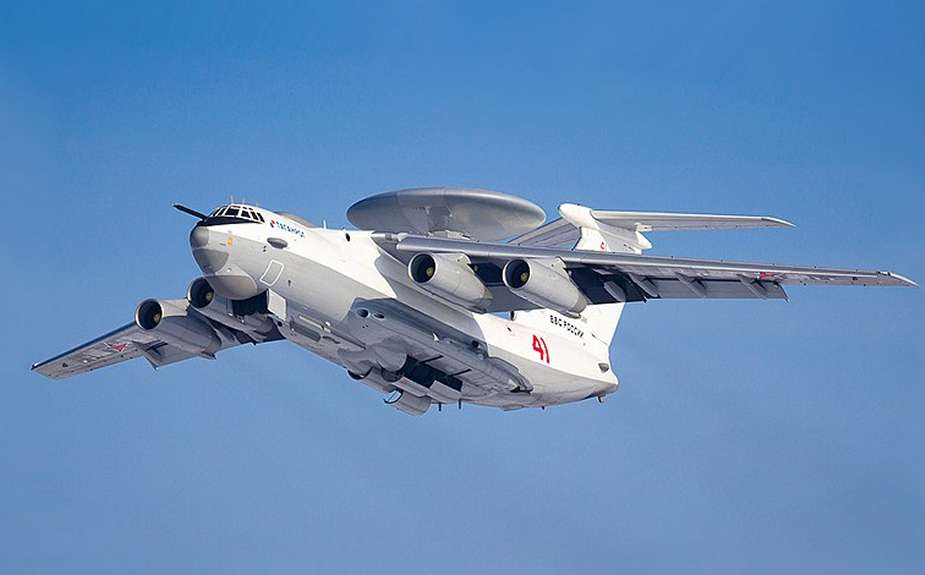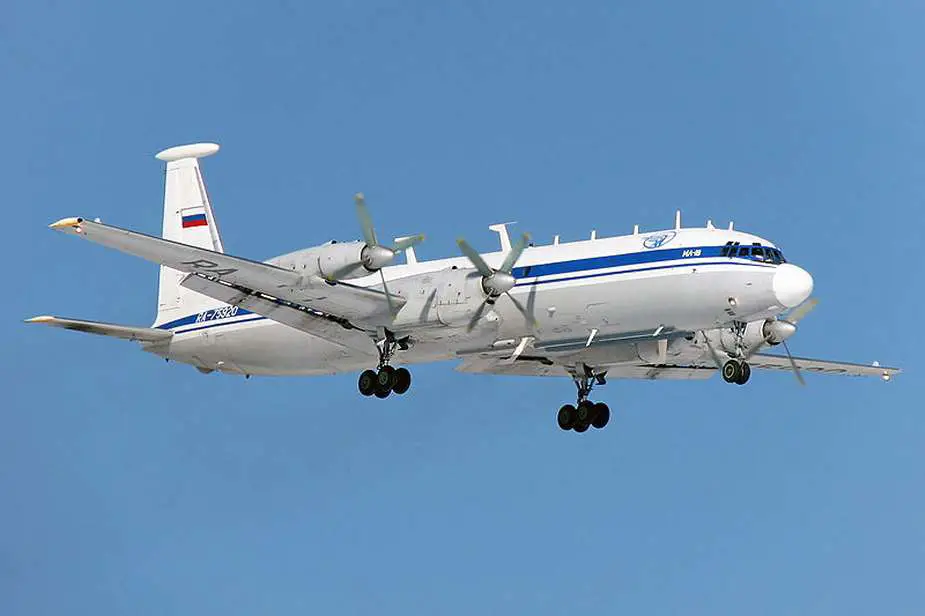Breaking news
Russia loses A-50 AEW&C and Il-22M over Azov Sea from Ukrainian missiles.
According to the media and the Verkhovna Rada Committee on National Security, Defense and Intelligence, on January 14, a $300 million Russian A-50 Shmel aircraft was destroyed and an Il-22M11 was damaged, both over the Azov Sea, Ukraine's Center for Strategic Communication and Information Security (CSCIS) wrote on Facebook, Ukrinform reports.
Follow Air Recognition on Google News at this link
 The Beriev A-50U Shmel is a Soviet-era airborne early warning and control aircraft (AEW&C) (Picture source: Wikipedia/mil.ru)
The Beriev A-50U Shmel is a Soviet-era airborne early warning and control aircraft (AEW&C) (Picture source: Wikipedia/mil.ru)
Reports appeared on Russian and Ukrainian Telegram channels on the evening of 14 January about the downing of a Russian A-50 Shmel (NATO code name: Mainstay) reconnaissance aircraft and damage to an Il-22M (NATO code name: Zebra or Coot-B), which was partially confirmed this Monday 15 morning by Lieutenant General Mykola Oleshchuk, Commander of the Ukrainian Air Force, and Ukrainska Pravda’s sources in the Ukrainian government. Information about the downing of the aircraft was also confirmed by Ukrainska Pravda sources: "A-50 for sure. Il-22 about 98% certain".
The A-50U (coded RF-50601) disappeared from radars in the Kyrylivka area in southern Ukraine and stopped responding to requests from Russian tactical aviation at about 9:10 p.m. to 9:15 p.m. local time. Later, th pilot of a Russian Su-30 discovered "the ignition and crash of an unidentified aircraft," RBC-Ukraine reported. Multiple Russian Telegram channels reported that Moscow lost a Beriev A-50 Shmel in a case of friendly fire late on Sunday 14, and that an Ilyushin Il-22M airborne commandpost was damaged, also above the Azov Sea. This marks the biggest Ukrainian air victory of this war so far.
The Beriev A-50 Shmel is a Soviet-era airborne early warning and control (AEW&C) aircraft based on the Ilyushin Il-76 Candid transport. Developed to replace the Tupolev Tu-126 "Moss", the A-50 first flew in 1978. It entered service in 1985, with about 40 produced by 1992. It is used to prepare strikes and prevent enemy attacks. Russia has only 20 left of this aircraft, each of which costs an estimated $330 million, reported Radio Svoboda, the Russian service of Radio Free Europe/Radio Liberty, citing government data. The enemy is not able to compensate for its loss, as there are only up to 10 or 20 such aircraft left in Russia's arsenal.
Yurii Mysiahin, deputy head of the committee on national security, defense and intelligence of the Ukrainian Parliament, said on his Telegram channel that Ukrainian units conducted an attack on two of the Russian Aerospace Forces' aircraft on Sunday 14 evening, specifically targeting the A-50 and the Il-22M plane. The A-50 was downed and the Il-22M "was in the air and tried to reach the nearest airfield, but it disappeared from the radar after the descent began, in the Kerch area," Mysiahin said.
The damage inflicted on the Il-22M ( is not known: the plane is at least heavily damaged, if not completely irreparable. The exact version is also not yet known because it could be an airborne command Il-22M, an Il-22M-11 specialized in electronic communications (air relay), or even an Il-22PP of signals intelligence (unlikely in this case, Air & Cosmos comments).
 Ilyushin Il-22M-11 Zebra coded RA-75920 (c/n 2964017551) at Chkalovsky Airfield (Picture source: Wikipedia/Kirill Naumenko)
Ilyushin Il-22M-11 Zebra coded RA-75920 (c/n 2964017551) at Chkalovsky Airfield (Picture source: Wikipedia/Kirill Naumenko)
An Il-22M11 aircraft is a protected air command post that acted together with the A-50 during Russian air attacks against Ukraine. This is Russia's second Il-22M loss during the war. The first such aircraft was shot down by fighters of the Wagner PMC during Prigozhin's mutiny in the summer of 2023.
First designated Il-18D-36 Bizon, the future Il-22 was dressed in the civilian livery of Aeroflot aircraft. The plane was quickly identified by Westerners who wrongly gave it the name Coot-B, considering it a transport plane directly derived from the Il-183. Its first flight took place in 1972.
Compared to the Il-18s of the time, the Il-18D-364 had clear improvements, such as an APU intended to provide the energy necessary for the operation of the various communication systems, notably HF, VHF, and UHF. In addition, its landing gear had been reinforced and fitted with mudguards allowing it to operate from crudely equipped airfields.
In 1982 a new prototype, designated Il-22M-11 Zebra, appeared and was equipped with new equipment such as a more powerful APU, derived from that fitted to the Tupolev Tu-154 tri-jet airliner. The Zebra also made it possible to test a radio link called VVLF1, at very very low frequency, allowing communication with diving submersibles.
The first production examples, designated Il-22, entered active service in 1979. Three years later, these aircraft were all upgraded to the Il-22M standard. Little is known of their operational use, except that until the breakup of the USSR, most flew under the colors of Aeroflot and carried civilian registrations, although the crews were clearly composed of military personnel. . Subsequently, they were shared between the various new ex-Soviet republics, but the majority remained in Russia. In the latter country, they still wore the Aeroflot livery throughout the 1990s.
What did bring the two Russian planes down?
As very interestingly underlined by Air & Cosmos, the downing of two aircraft has raised intriguing questions. Notably, the Ukrainian military's ability to engage in ground-to-air combat in the Sea of Azov region has come into focus. The Patriot PAC-2 long-range anti-aircraft system, which boasts a maximum range of 160 km, is an asset in Ukraine's defense arsenal. In contrast, the Ukrainian S-300 anti-aircraft systems possess a limited stock of ammunition, with undisclosed specifics regarding their munitions. It is known, however, that these systems include missiles with a range of at least 75 km and potentially even exceeding 150 km.
For effective utilization, the Ukrainian military would have had to position a launcher on the front lines, covering a significant area above the north-western Sea of Azov. This strategic placement, while advantageous, also exposes the launcher to the risk of Russian artillery and drones, creating a complex tactical challenge.
Additionally, the proximity of Berdiansk to the alleged shooting down of the A-50U aircraft has raised questions about the Patriot PAC-2 system's reach, given its 160-kilometer range. Berdiansk is approximately 100 km from the front lines, but it's worth noting that Patriot PAC-2 systems have been reported in Ukrainian cities, indicating their presence on the ground.


























